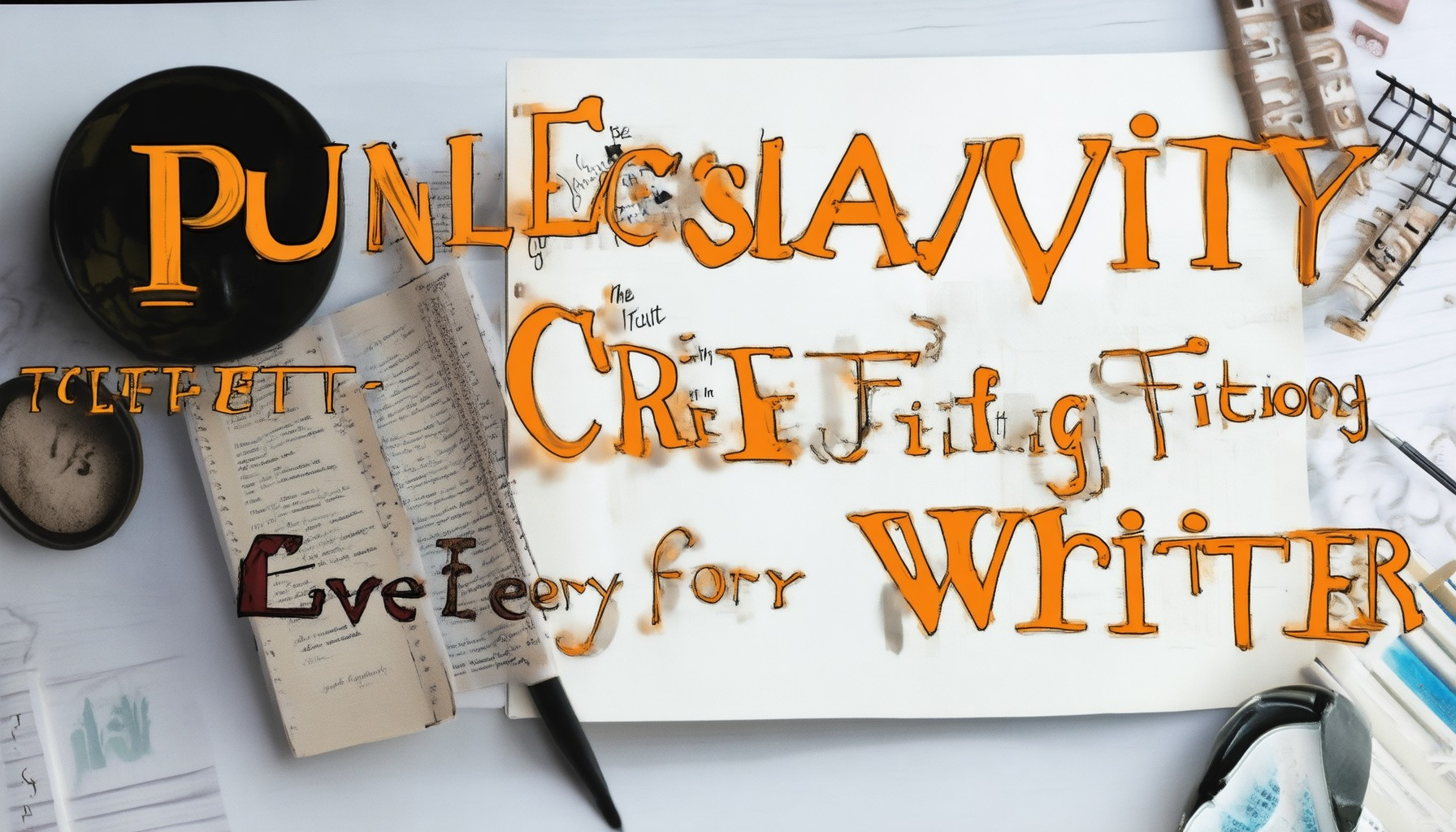Unleashing Creativity: Top Fiction Writing Tools for Every Writer
Writing a compelling story is a journey that requires not just imagination but also the right tools to bring your ideas to life. Whether you’re a seasoned author or just starting out, the world of fiction writing tools offers a vast array of options to enhance your craft. From traditional word processors to cutting-edge AI-powered software, these tools can help streamline your process, organize your thoughts, and even inspire new ideas. In this comprehensive guide, we’ll explore the best fiction writing tools, from software that helps structure your novel to online platforms that fuel creativity. We’ll also dive into the ethical considerations, like the use of AI in writing, and provide actionable tips to improve your storytelling skills. Let’s uncover how these tools can transform your writing journey and unlock your full potential as a storyteller.
Key Takeaways
- Craft a compelling hook to hook readers instantly.
- Develop deep, relatable characters that resonate.
- Leverage settings that enhance your narrative.
- Adhere to a structured plot for a compelling story.
- Master point of view for clarity and depth.
- Use descriptive language to immerse readers.
- Conduct thorough research for authenticity.
- Seek feedback to refine your writing.
- Learn from successful authors’ techniques.
- Establish a consistent writing routine.
- Revise carefully for quality.
- Balance creativity with discipline for success.
- Understand your audience to connect better.
- Show, don’t tell, to let readers infer meaning.
- Overcome challenges in idea generation.
- Succeed in character development.
- Manage time and commitment effectively.
- Excel in editing and revising.
- Stay resilient under pressure.
- Seamlessly blend creativity and structure.
- Constructively handle feedback.

The Best Tool for Writing a Novel
When it comes to choosing the best tool for writing a novel, many writers have preferences that depend on their unique needs. However, Microsoft Word remains a top choice for its reliability, extensive features, and compatibility across various platforms. Its interface is user-friendly, making it ideal for both seasoned writers and newcomers.
For those looking for alternatives, Scrivener is a popular option known for its flexibility and focus on helping writers stay organized. Google Docs is another excellent tool, offering real-time collaboration and access from anywhere. Both options are worth considering depending on your workflow preferences.
Writing Tips for Success
- Outlining: Start by creating a detailed outline to guide your writing process. This helps in maintaining structure and ensuring your story progresses logically.
- Consistency: Set a daily writing routine to build momentum and meet your deadlines. Consistency is key to completing your novel.
- Revision: Edit your work thoroughly, focusing on grammar, pacing, and character development. Multiple drafts are essential for polishing your manuscript.
- Research: Conduct thorough research to ensure your plot and characters are believable and engaging. This includes exploring settings and historical contexts.
For more tips and resources on improving your writing skills, visit our literary platform . We offer insights, guides, and advice to help you bring your novel to life.
Remember, the choice of tool is personal, but having the right support and resources can make all the difference. Whether you prefer traditional software or digital platforms, the most important thing is to stay committed to your passion for storytelling.
What Program Does Stephen King Use to Write?
Stephen King is well-known for using Microsoft Word as his primary writing tool. Known for his meticulous attention to detail and commitment to the writing process, King relies on Word’s robust features to assist in crafting his renowned novels and stories. The program’s built-in spell check, grammar suggestions, and auto-save functionality are particularly beneficial for maintaining the high quality of his work.
Word’s organizational capabilities also play a significant role in King’s workflow. He utilizes the program’s ability to format documents, create outlines, and manage multiple drafts efficiently. This ensures that his manuscripts are not only error-free but also well-structured, making the editing process smoother and more effective.
While there are other writing tools available, such as Scrivener or Google Docs, Microsoft Word remains King’s go-to choice due to its reliability and compatibility with his established writing routine. Its seamless integration with other Microsoft Office applications further enhances its utility for organizing and refining his creative work.
By leveraging Word’s advanced features, Stephen King maintains a productive and efficient writing process, ensuring that his ideas translate seamlessly onto the page.

Is it legal to use ChatGPT to write a book?
It is entirely legal to use ChatGPT or any AI tool to assist in writing a book. Here’s a breakdown of the key considerations:
- Copyright Ownership :
- The content you generate using ChatGPT will be owned by you, provided you are the primary creator. If you use AI tools to assist in writing, you retain copyright ownership of the final work as long as you haven’t copied someone else’s work.
- AI-Generated Content Regulations :
- As of now, there are no specific laws banning the use of AI for writing books. However, there are ongoing discussions about regulating AI-generated content. Currently, using AI tools like ChatGPT for writing is permissible.
- Ethical Considerations :
- Always ensure that the content you generate is original and not plagiarized. Properly attribute any ideas or content that you borrow from others, even if generated through AI.
- Publishing and Licensing :
- If you plan to publish your book, ensure that you have the rights to the content. Some platforms may require proof of originality or ownership.
Key Takeaways:
- Using ChatGPT to write a book is legal.
- You own the content you generate, provided it’s original.
- Always maintain proper attribution and avoid plagiarism.
- Stay informed about evolving regulations regarding AI-generated content.

Improving Your Fiction Writing
To enhance your fiction writing, consider the following structured approach:
- Craft a Strong Hook : Begin your story with a compelling opening that grabs attention, whether through a surprising event, intriguing character revelation, or unique setting.
- Develop Deep Characters : Invest time in creating characters with rich backstories, motivations, and internal conflicts. Explore their histories and how they evolve throughout the narrative.
- Leverage the Setting : Choose settings that resonate with your story and characters. Consider how the environment reflects their emotions and influences the plot progression.
- Adhere to a Structured Plot : Utilize the three-act structure to organize your story, ensuring a clear beginning, middle, and end. Incorporate conflicts and twists to maintain engagement.
- Master the Point of View : Select a consistent perspective (first or third person) to streamline your narrative. Use limited third-person to depict multiple viewpoints effectively.
- Enhance Descriptive Language : Elevate your writing by incorporating sensory details—sounds, smells, textures—that immerse readers in your world.
- Conduct Thorough Research : Delve into real-world elements like locations or historical events to add authenticity. Start with areas of interest and explore deeply.
- Seek Feedback and Iterate : Share your work with trusted peers or beta readers for constructive criticism. Embrace feedback to refine your craft and overcome weaknesses.
- Study Successful Writers : Analyze award-winning novels to dissect effective techniques in character development, pacing, and dialogue. Break down scenes to identify strengths and areas for improvement.
- Establish a Writing Routine : Commit to a daily schedule to foster consistency and develop a habit. Dedicate time to brainstorming and drafting.
- Revise Thoughtfully : Write a complete draft before revising, focusing on grammar, flow, and coherence. Use a checklist to guide the editing process.
- Balance Creativity and Discipline : Experiment with writing exercises to spark creativity and overcome writer’s block. Set achievable goals to monitor progress and stay motivated.
- Understand Your Audience : Identify your target readers and tailor your writing to resonate with their interests and preferences, ensuring relatability and engagement.
By systematically addressing each of these areas, you can refine your fiction writing, making it more compelling and aligned with your artistic vision.
Why is it Hard to Write Fiction?
Writing fiction presents several unique challenges that can make the process difficult. Here are five key reasons:
- Idea Generation : Coming up with a compelling plot, relatable characters, and a unique setting can be daunting. Often, writers struggle with writer’s block, staring at a blank page unsure of where to begin.
- Character Development : Creating deep, multifaceted characters requires insight into their motivations, flaws, and growth arcs. Without this, characters risk feeling flat and disconnected from readers.
- Time and Commitment : Writing is a time-intensive task. It often demands hours of dedication, leaving little room for spontaneity. Maintaining consistency and momentum can be challenging, especially when motivation wanes.
- Editing and Revising : Even after completing a draft, extensive editing is necessary to refine grammar, pacing, and dialogue. This step can be as demanding as writing itself, requiring patience and a critical eye.
- Pressure and Expectations : Meeting reader expectations and facing criticism can be overwhelming. Balancing artistic vision with commercial appeal is a delicate act that can lead to self-doubt.
- Balancing Creativity and Structure : While creativity drives the writing process, it must coexist with structural elements like plot progression and character development. Blending these aspects seamlessly is not always straightforward.
- Receiving Feedback : Constructive criticism is essential, yet it can be disheartening. Navigating feedback requires emotional resilience and the ability to discern useful insights from less helpful commentary.
Despite these obstacles, the reward of crafting a story that resonates with readers makes the effort worthwhile.

How to Show, Not Tell, in Writing
To effectively show, not tell, in writing, employ descriptive techniques that allow readers to infer meaning rather than being explicitly stated. Here are some strategies:
- Use Sensory Details : Engage the reader’s senses by incorporating sights, sounds, smells, tastes, and textures. For example, describe a joyful scene with vibrant colors, laughter, or uplifting music.
- Employ Dialogue : Allow characters to express emotions through conversation. While dialogue may seem like telling, it often serves as a natural way to reveal feelings indirectly.
- Leverage Imagery : Paint vivid pictures that evoke emotions. Describing a stormy sky can convey tension, while a serene landscape can depict calmness.
- Influence Through Pacing : Manipulate the narrative’s speed to gradually reveal emotions. Slowly build up to a climax to allow tension to develop naturally.
- Utilize Metaphors and Similes : Compare concepts to evoke feelings. For instance, “the road was paved with gold” illustrates prosperity without direct statement.
- Show Actions : Depict behaviors that reflect emotions. A clenched fist might show anger, allowing the reader to infer the character’s feelings without explicit declaration.
By combining these methods, writers can create immersive narratives that engage readers effectively, balancing description and inference to enhance storytelling. Consistency in applying these techniques maintains reader engagement and immersion.





0 Comments